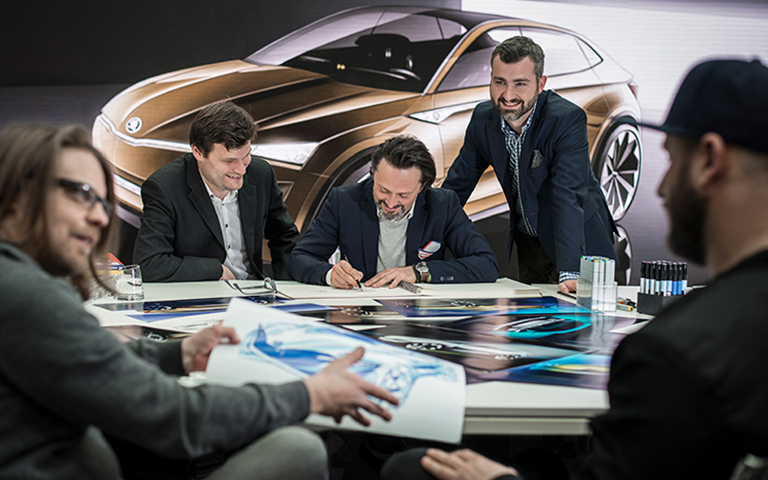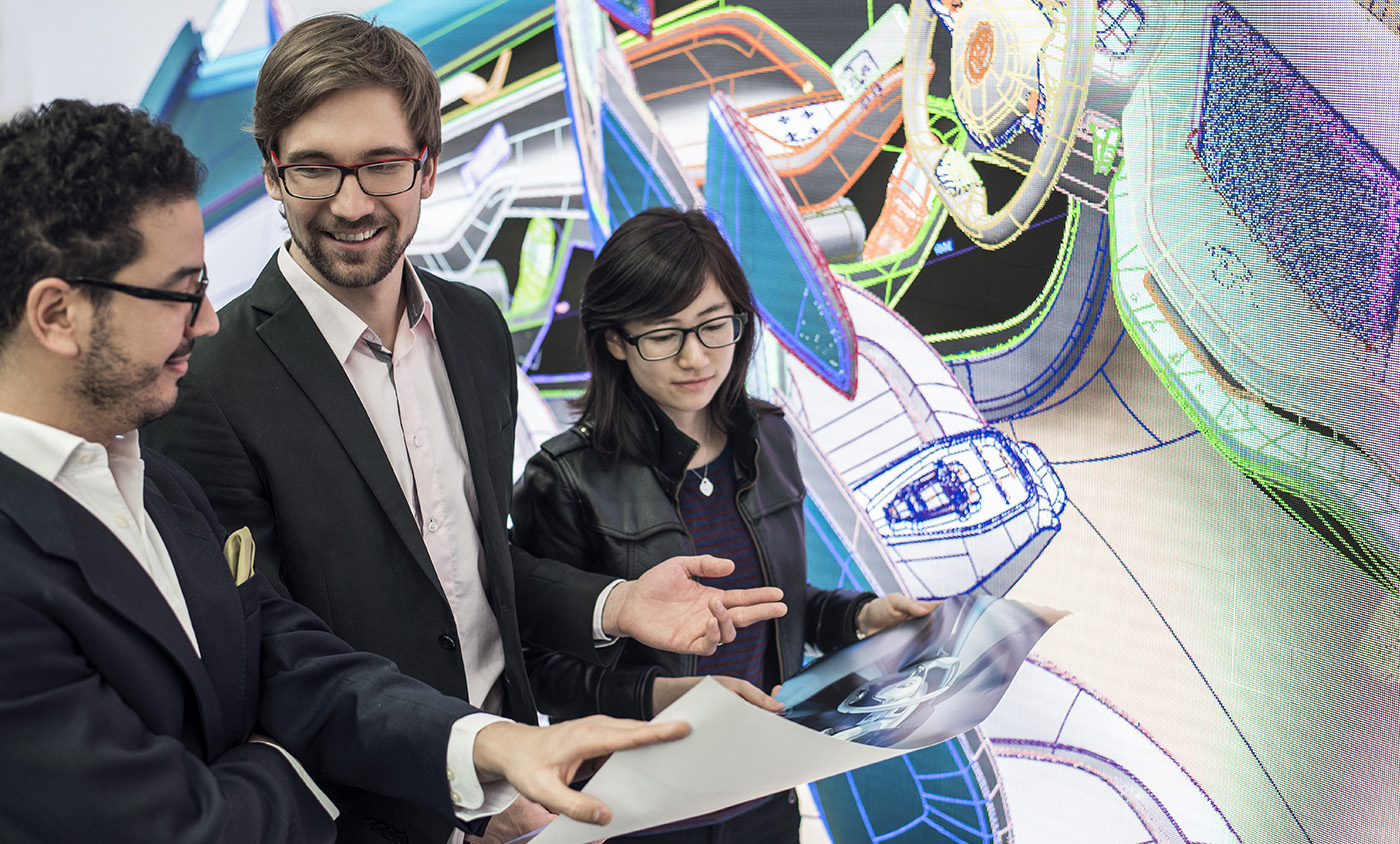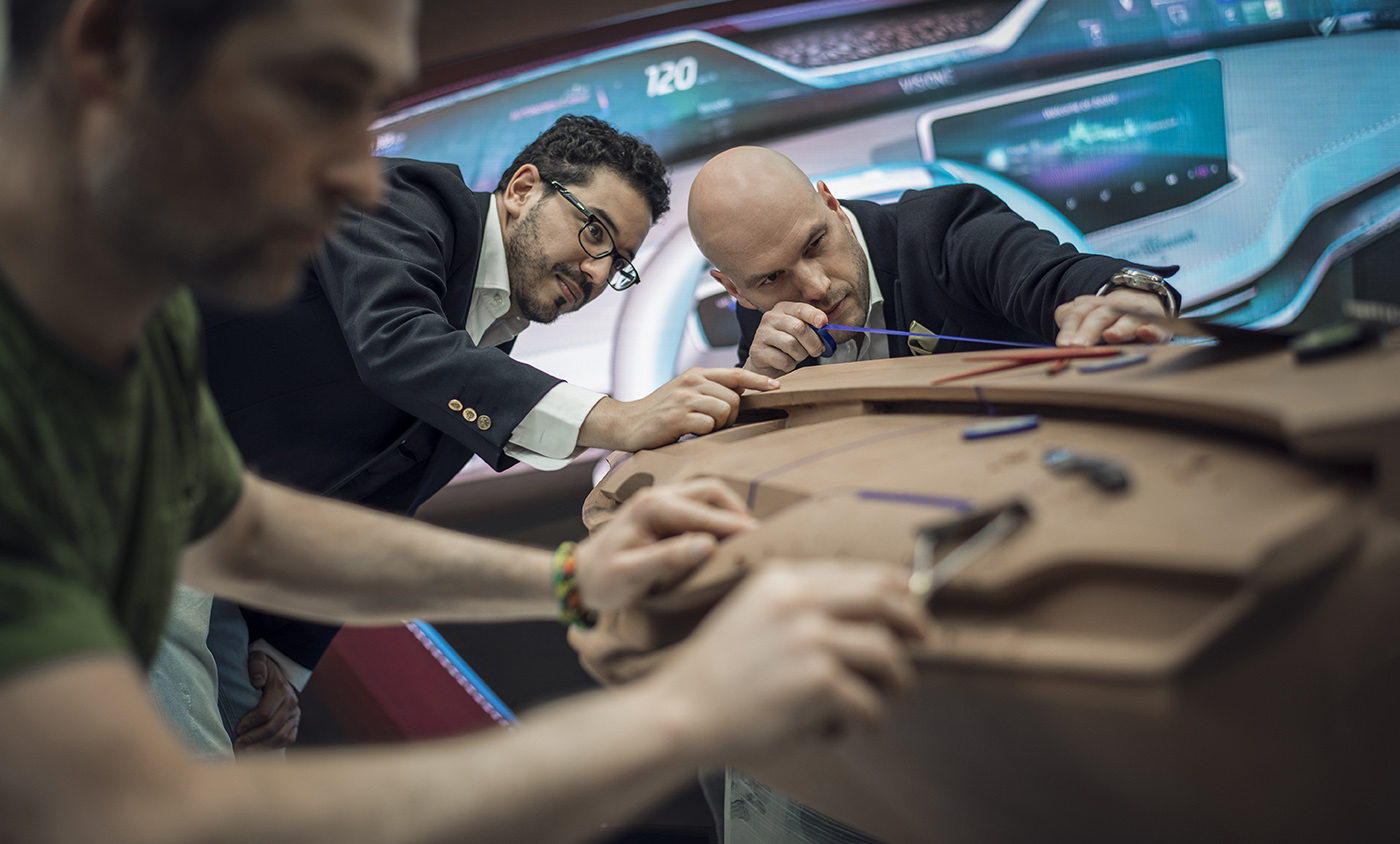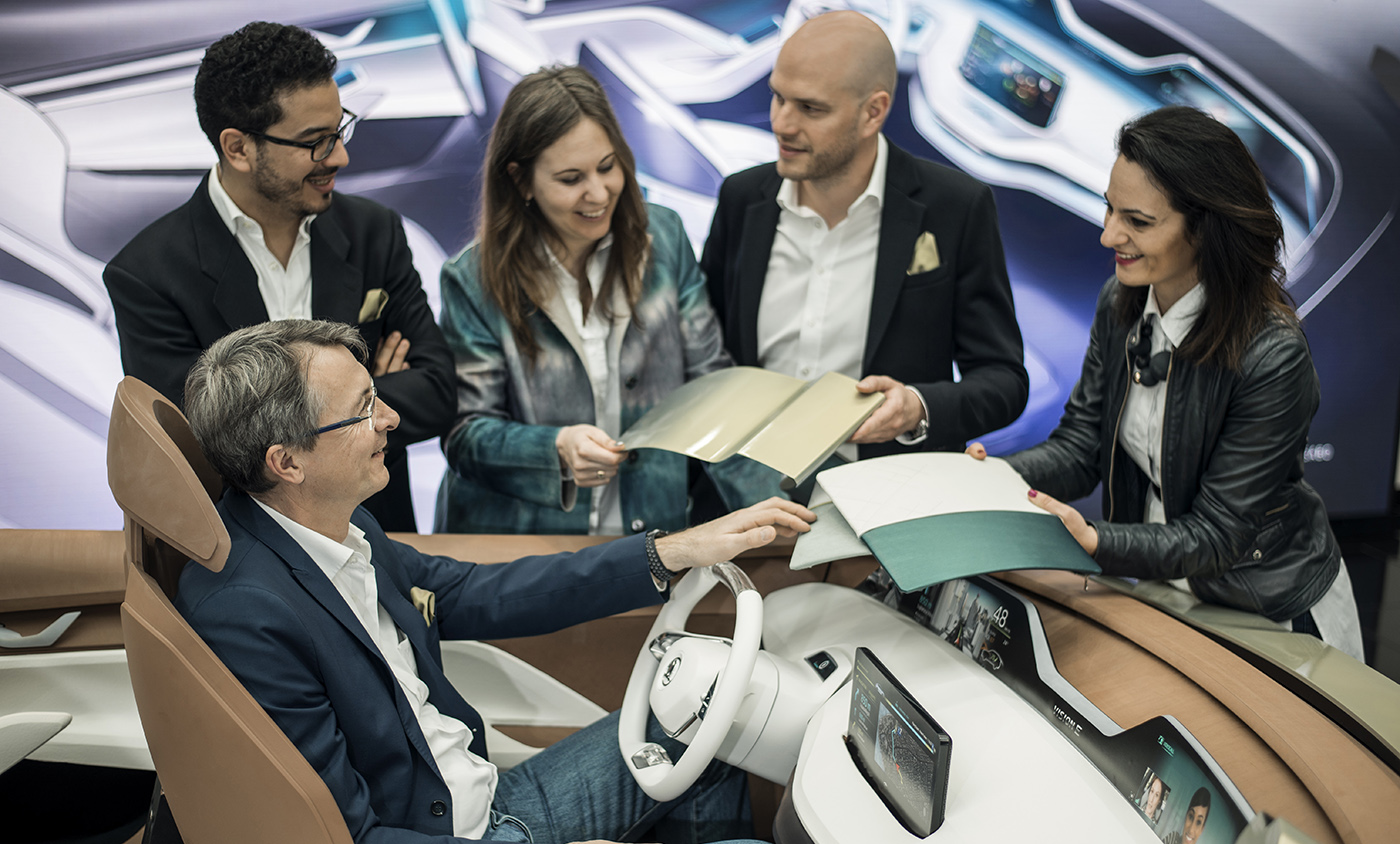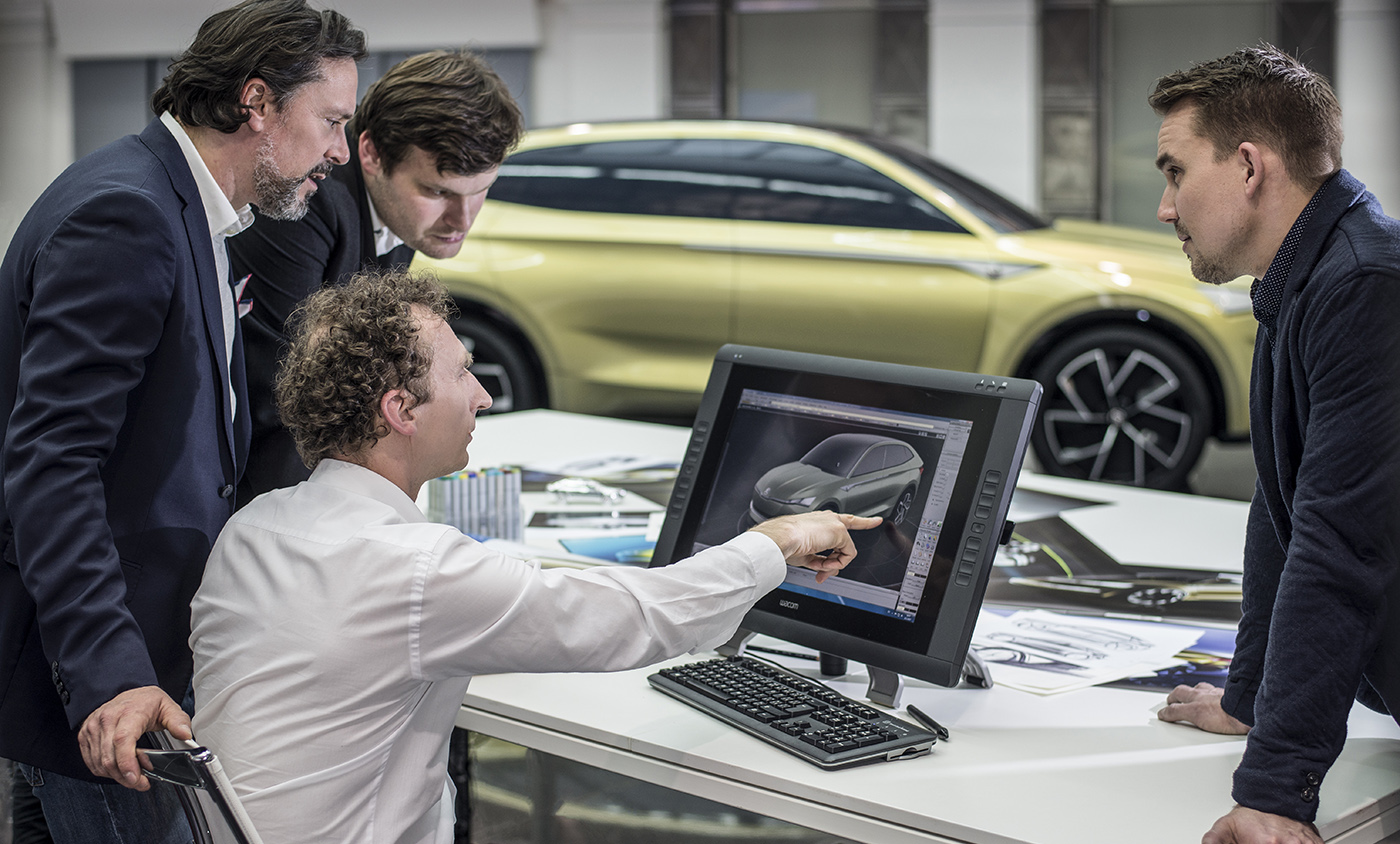The closer the exterior designers get to the final shape, the more important it is for them to get the best possible idea as to how the car will work with individual details in place and in various environments and conditions. With series production cars in particular, they need to see the shapes in daylight. “Our ambition is to produce cars that are not just lovely at first sight, but are also modern and timeless,“ says designer Dalibor Pantůček, commenting on the exterior look of the VISION E. “That‘s why all lines are pure, simple and perfect in terms of proportions.”
Obviously, the main difference between electric cars and cars with combustion engines lies on the technology side, and the exterior look of the VISION E is only “electricity-specific” in that the air cooler grille (that the electric motor can do without) is covered. On the other hand, the car bears some of the typical ŠKODA features, including the boldly shaped bonnet with a striking 3D logo, the C-shaped taillights, etc.





